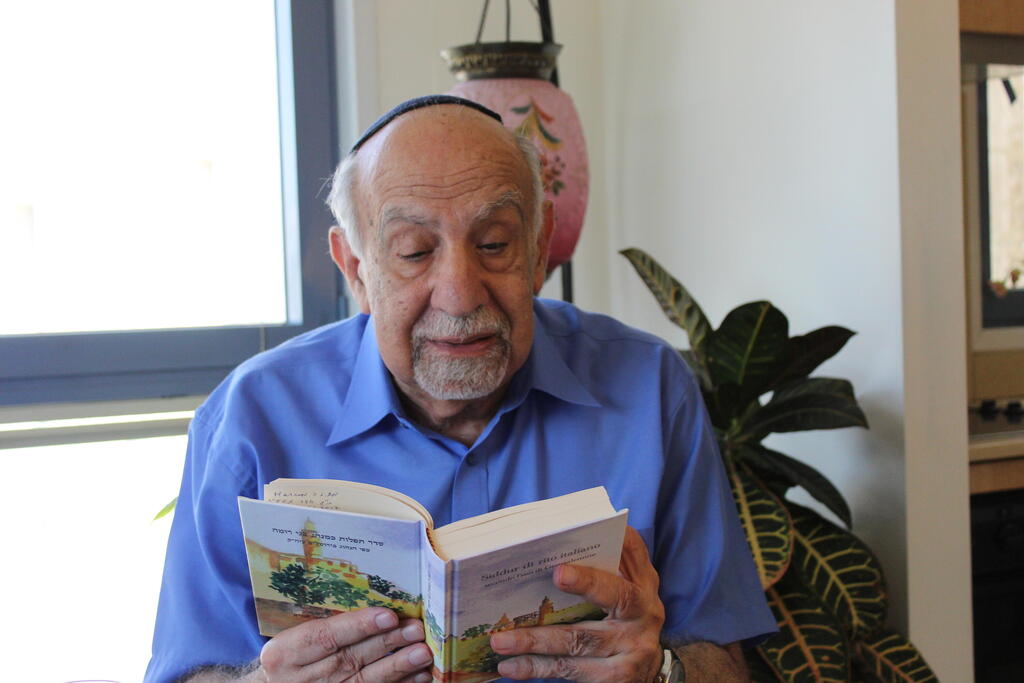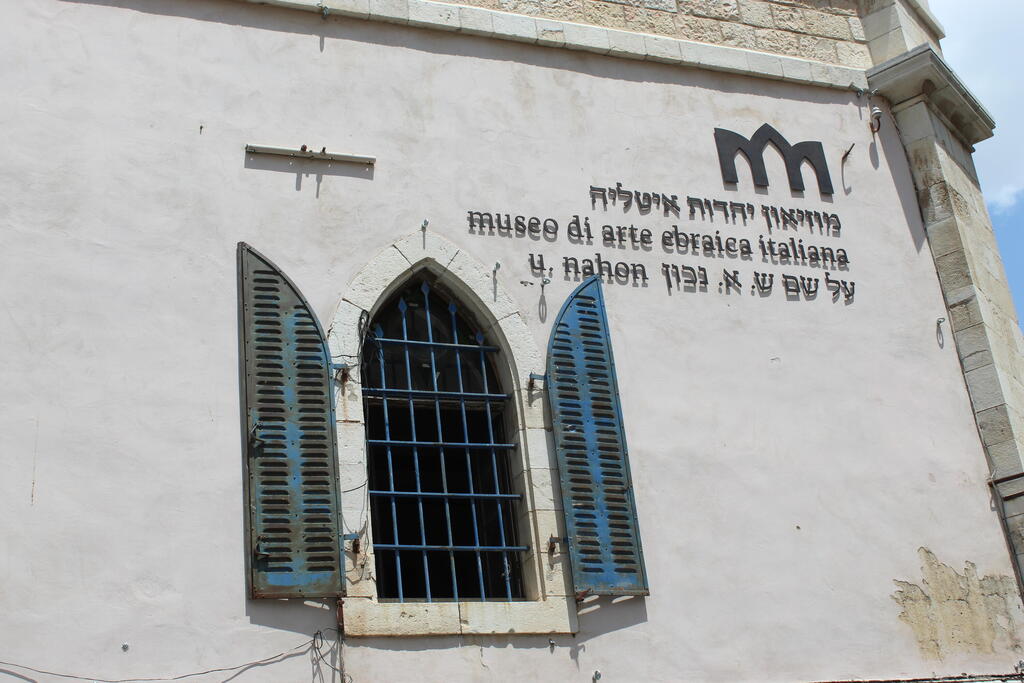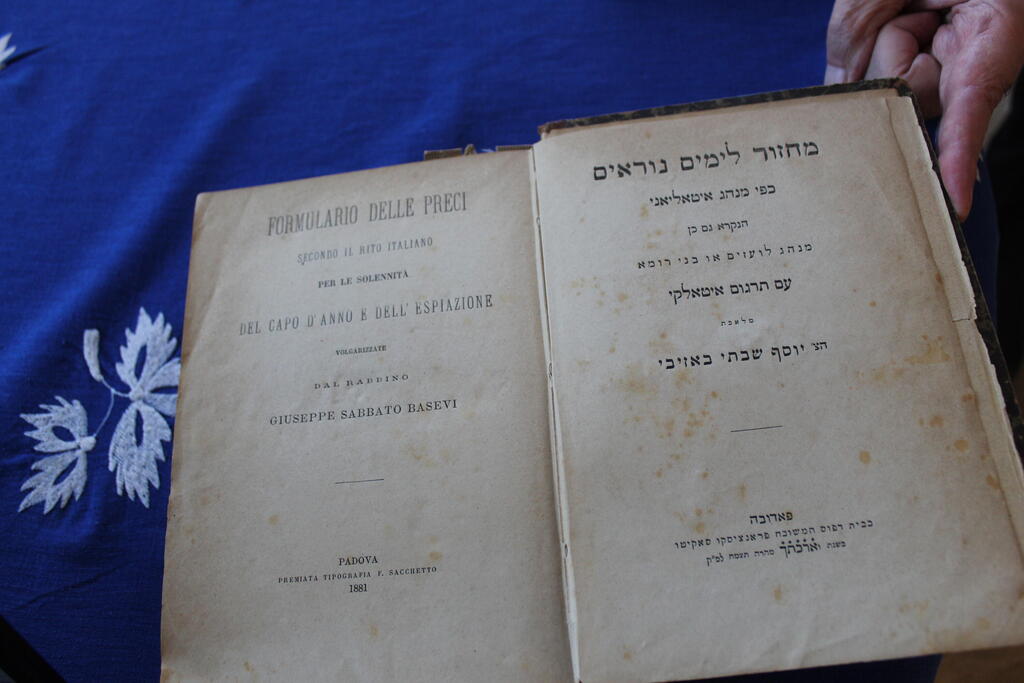In a historic building designed by a Templar architect on Hillel St. in Jerusalem lies the Museum of Italian Jewry. Within the museum is the Italian synagogue of the Conegliano Veneto community which preserves a centuries-old tradition.
More stories:
The synagogue holds communal prayers on Sabbaths, holidays and recently even at the beginning of new months. Attendees observe the traditions and prayers in a unique liturgy specific to Italian Jewry.
6 View gallery
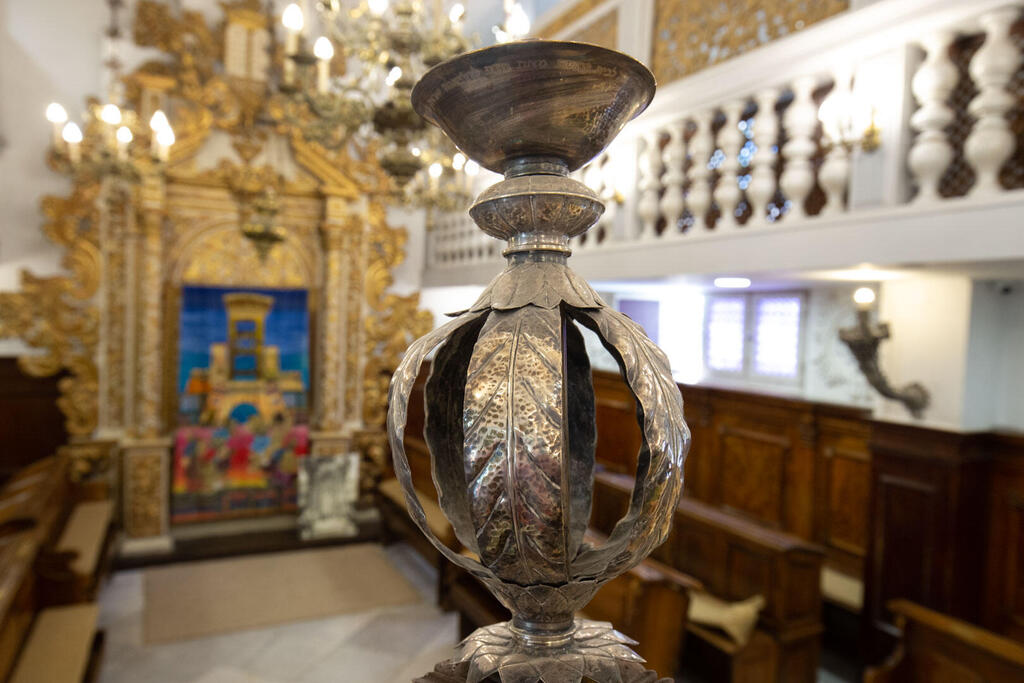

The Italian synagogue of the Conegliano Veneto community in Jerusalem
(Photo: David Sa'ar)
The synagogue was originally established in the early 18th century in the town of Conegliano Veneto in northern Italy. Its entire contents were meticulously transferred to Jerusalem, and in 1952 it was inaugurated in the Beit Schmidt building, where it remains today. This structure has a diverse history, serving as a Catholic establishment in the distant past and housing a girls' school. More recently, it was home to the religious Ma'aleh High School.
Daniel Nissim, a Holocaust survivor and history buff born in Padua in northern Italy, is among the synagogue's congregants. "There's always a minyan (quorum for prayer) on Saturday mornings," he shares. "The synagogue hosts family celebrations, including brit milahs, bar mitzvahs and even weddings."
Are you able to pass on the passion to the younger generation? How involved are they in the effort to maintain traditions?
"It's a great question. All four of my daughters are married—three to Ashkenazi Jews and one to a Sephardi Jew—and the grandchildren do not join in the prayers. It's not their custom. Marriages these days are mixed, and it's rare for a couple to be both Italian. Most couples are intercultural. There's definitely an issue when it comes to the next generations. For instance, my grandchildren don't speak Italian at all. For them, these are foreign customs. We hardly see any children in our congregation. It's a change from previous years."
Not just a curiosity
The Jewish community in Italy is one of the oldest in Europe, likely dating back to the time of the Second Temple. Over the years, migration from various diasporas led to the formation of a diverse Jewish population in Italy, with descendants of Sephardic exiles living alongside Ashkenazi Jews. The prayer rite of the "Bnei Romi," also known as the "Italian Rite," is unique to Italian Jews who are not of Ashkenazi or Sephardic origin.
6 View gallery
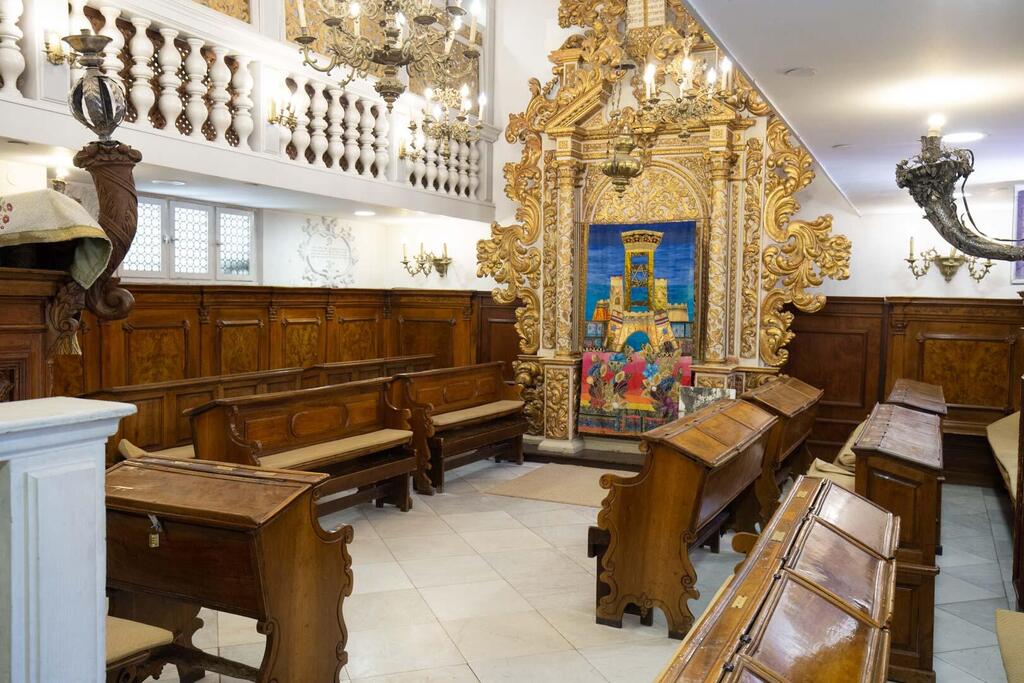

The Italian synagogue of the Conegliano Veneto community in Jerusalem
(Photo: David Sa'ar)
"There are things that are unique to Italian Jews, specifically those from the Bnei Romi community," says Nissim. "For example, on the eve of Yom Kippur, we recite 'Kol Nidrei' in Hebrew. Others recite it in Aramaic. Some Italians, instead of saying the blessing 'Shelo Asani Goy' ('who has not made me a Gentile'), say 'She'asani Yisrael' ('who has made me an Israelite') or 'She'asani Yehudi' ('who has made me a Jew')."
Out of more than 40,000 Jews who lived in Italy before the Holocaust, about 8,000 perished. Thousands fled to Switzerland, while others stayed in Italy and survived.
"Before World War II, there were dozens of small communities, each with its own liturgical rite and customs. After World War II, there were no Jews left in these places," says Nissim.
"Then came the initiative of Zionist activist Shlomo Umberto Nachon to bring Holy Arks from such places to Israel, effectively saving them. What's special about the synagogue from Conegliano Veneto is that it's exactly as it was there, in the northern town near Venice. He managed to find a space that perfectly matched the size of the original synagogue."
After Daniel and his wife Mirella got married in Milan, the couple moved to Israel in 1970. They lived in Tel Aviv, and he worked for many years as a pharmacist.
"We often walked to the Italian synagogue in Ramat Gan. The custom of the Ramat Gan synagogue, named after Rabbi Ovadia of Bertinoro, is a Sephardic one, from communities that came from Livorno and Florence. It's important to emphasize that Italian Jewry is not monolithic," he explains, "there are differences in liturgical rites, and those who adhere to the Bnei Romi rite are very passionate about preserving it."
About a decade ago, they decided to move to Jerusalem to be closer to their grandchildren, as three of their daughters live in the capital. "Since we've been living here, we've joined the minyan (prayer group) of the Italian community," he says.
"In recent years, additional minyans have opened in Jerusalem where people pray using the Bnei Romi rite, which has impacted the synagogue on Hillel St. On the other hand, it's good that there are two more synagogues."
"The uniqueness of the Bnei Romi rite is that it's the oldest existing rite. It's a story of two thousand years. It's not a curiosity within Judaism," says Mirella Nissim. "We moved to Israel because we were observant and also Zionists."
She herself was born in Switzerland at the end of World War II, after her parents fled from Milan. Twenty years ago, her sister, Bianca Shahror, was killed in a terrorist attack in Jerusalem during the Second Intifada.
Tolerant Judaism
The esteemed director Hagai Levi (In Treatment, Our Boys, Scenes from a Marriage) featured the Italian synagogue at the center of his first full-length film, August Snow, back in 1993. "My grandfather came from Italy, and this was his synagogue, the family's synagogue. I've been there many times, had my bar mitzvah there, and these days, even my son goes there," he explains. "All our family celebrations were held there. We knew the people; it's a very small community in the end, and it's one of its focal points."
"For the film, I organized a prayer service at the synagogue," he recalls. "My father and other regular congregants were there. There's a scene where people leave the synagogue on the Sabbath and speak in Italian. Of course, the scene wasn't filmed on the Sabbath but on a weekday. There are also other scenes that take place in the synagogue's courtyard. The entire film was kind of a tribute, aiming to represent Italian Judaism as liberal and tolerant, in contrast to Ashkenazi Judaism, which is often depicted as more zealous, conservative, and insular."
According to him, "There are a few synagogues in the country that follow the Italian rite. The ethos of Italian Judaism was that we are a bridge between the Sephardim and the Ashkenazim, and historically, this has been the case as well, as Italy had Jews who came from different countries."
What do you remember from your visits to the synagogue?
"We used to walk to the synagogue. Today, there are also people there who are not Italian, but back then everyone was Italian. People would come to the synagogue somewhat like they would go to the opera; they were all very educated people, professors and people involved in the arts.
“My grandfather, Leo Levi, was a musicologist, and his life's project was the collection of Italian liturgy. Among the community members was also Prof. David Cassuto, the renowned architect who served as the deputy mayor of Jerusalem."
Do you still get to visit there?
"Today, I visit the synagogue less often. Occasionally, there are family events there. When my son started going there on Saturdays in Jerusalem, it made me happy."
6 View gallery
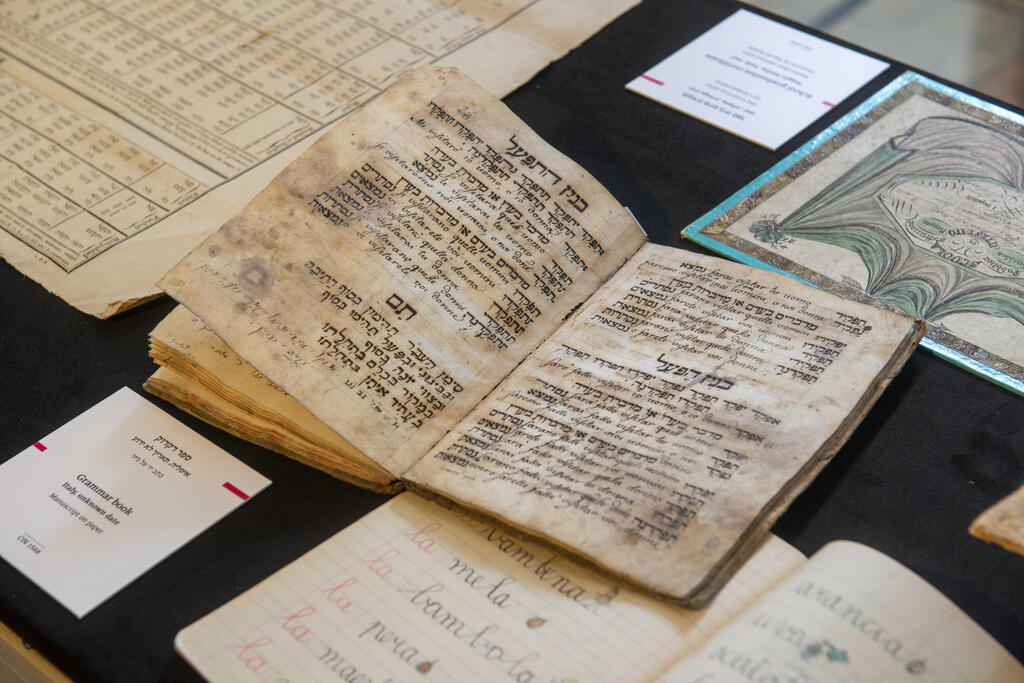

An old Hebrew grammar book on display in the Museum of Italian Jewry in Jerusalem
(Photo: Yair Hovav)
Aesthetics alongside tradition
The Museum of Italian Judaism, named after Shlomo Umberto Nahon, was founded in 1983. The current exhibit, "The Hidden Revealed," sheds light on the story of the museum's collection and offers a glimpse into the treasures housed in the museum. Alongside permanent exhibit items such as an ornate Ark of the Covenant and chairs originally donated to the synagogue in Mantua in 1543, the exhibit also features a Hebrew learning cube set, a diary, and other personal items that provide insights into the lives of Italian Jews.
"In the synagogue, there was initially a lack of ritual articles. Around the time of the founding of the state and during the 1950s and 1960s, various items from Italian Jewry started to arrive, and individual donors and communities wanted to contribute them to the synagogue," explains Daniel Niv, the museum's director.
"Shlomo Umberto Nahon, who was a Zionist activist in Italy before World War II and one of the founders of the Italian Jewish community in Jerusalem, would record each Sabbath which items were donated to the synagogue. This essentially became the first record upon which the museum was founded.
He opened the first exhibit to community members, and in 1983, it was decided to formally turn it into a museum. From there, the collection has only continued to grow.
"In the synagogue, there is a real, living community, and right next to it operates the museum. It's a beautiful and wonderful situation, but it's also complex," he notes.
"On one hand, it's an active synagogue, and on the other hand, it's also a precious treasure that needs to be preserved. There's always a desire to fulfill the vision of those who brought the Italian holy arks to the country—Astora Mayer, Federico Luzzati, and Shlomo Umberto Nahon: they wanted them to be used. Indeed, one of these arks in our possession is actively used and is located in the synagogue."
He adds that the museum, partly supported by the Shusterman Foundation which funds social projects in Israel, is in a phase of renewal and aims to expand. "The museum presents to the public the unique history and culture of Italian Jewry. Jews in Italy lived with a dual identity, beautifully balancing between them—on one hand, they drew from the aesthetics of general Italian culture, and on the other, they zealously preserved their Judaism and traditions, and learned Hebrew."



